On a hot summer day like this, what can be better than taking a plunge in a pristine lake or a calm river? Sadly, these swimming opportunities are rare in our age of busy and often polluted waterways. That is why architects are developing some creative alternatives to conventional swimming pools within the urban context. Sitting on lakes, seas and rivers even amidst the busiest cities, these floating pools satisfy the metropolises’ demand for beaches and create unique settings for a swim.
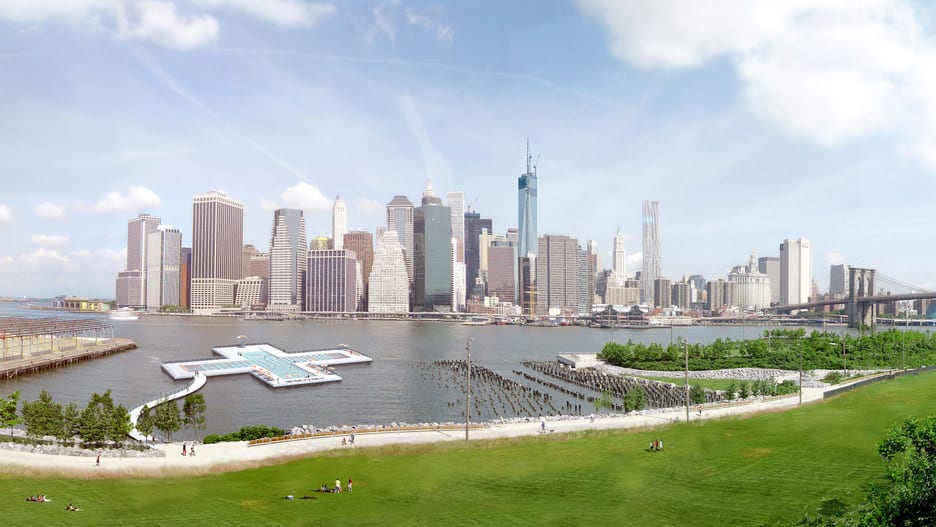
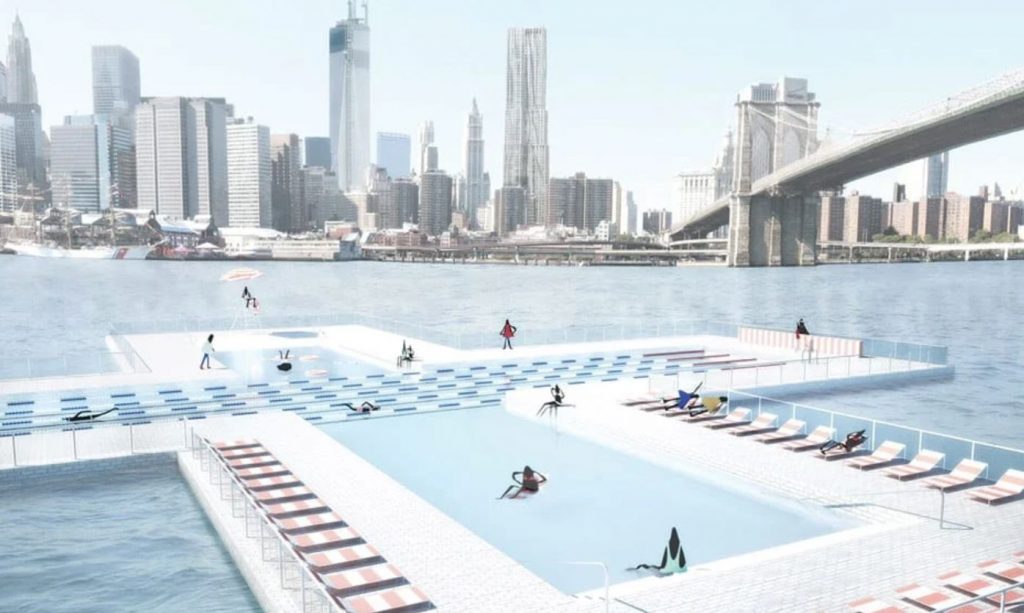
Floating pool on New York’s East River by +Pool (also header image)
Los Angeles studio PlayLab and the non-profit organization +Pool they confounded with Dong-Ping Wong (ex-Family) proposed a project of a floating swimming pool for New York’s East River over a decade ago, but only managed to receive an official “confirmation to proceed with due diligence” from New York’s Economic Development Corporation this May. The team has spent 10 years developing the technology and raising funds to test prototypes for the pool. Completion is expected within two years.
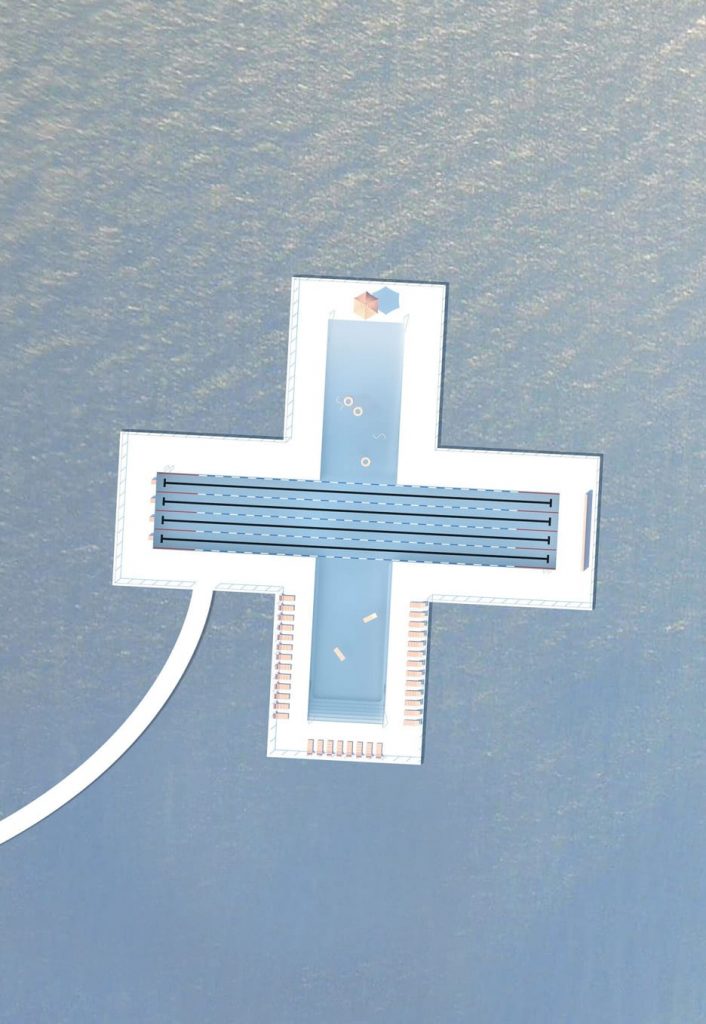
Floating pool on New York’s East River by +Pool
The team claims the project, which will include a lap pool and an area for children, could filter over 600,000 gallons of river water per day. Instead of using chemicals to clean the water, the +Pool engineers have modelled a membrane filtration system using software developed by the US’s Environmental Protection Agency (EPA).
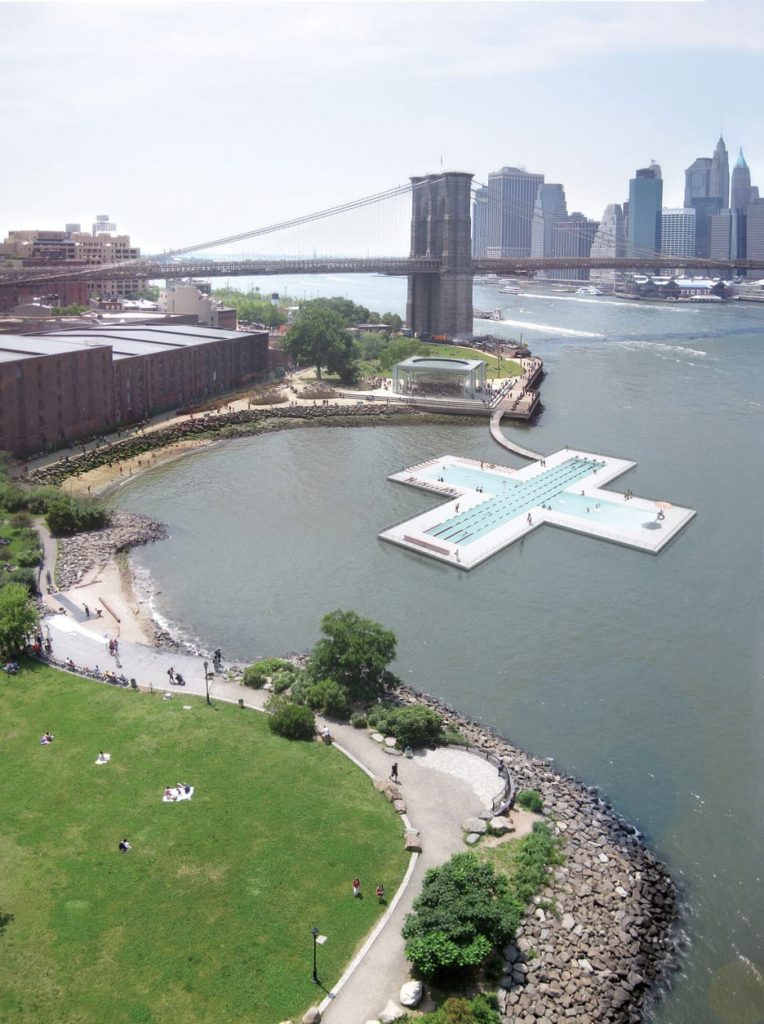
Floating pool on New York’s East River by +Pool
In this way, the floating pool aims to create a safe place for people to swim while cleaning the East River, a saltwater tidal estuary that divides Manhattan and Brooklyn, which gets contaminated with sewage via the old combined sewer overflow (CSO) system.
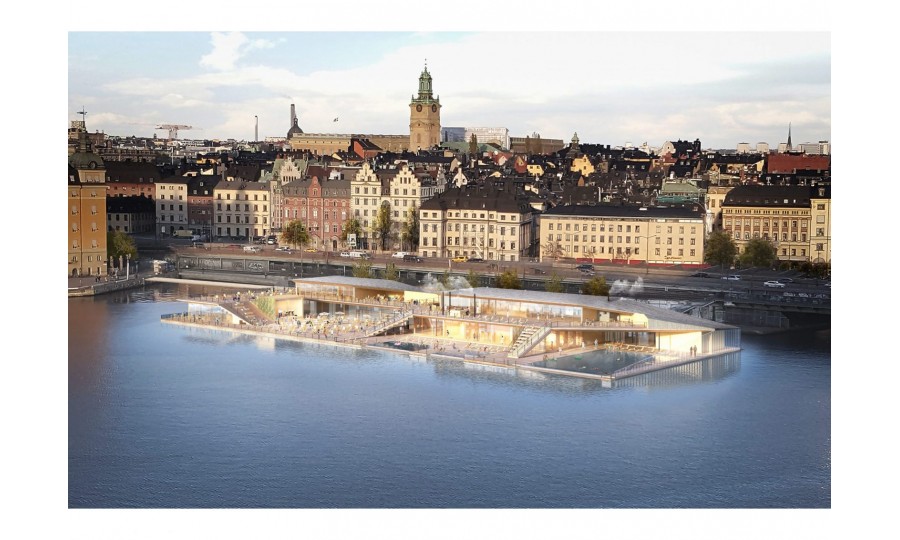
The Hamnbad Stockholm by OOPEAA
Finland-based architecture studio OOPEAA, short for Office for Peripheral Architecture, plans to build a floating pool in Munkbrohamnen in downtown Stockholm. Named the Hamnbad Stockholm, it is based on the competition-winning Architectural Global Concept developed by OOPEAA for the Allas Sea Pool Family, which aims to introduce waterborne swimming pools to coastal and riverside cities around the world, embracing the Nordic tradition for bathing and swimming outdoors all year around.
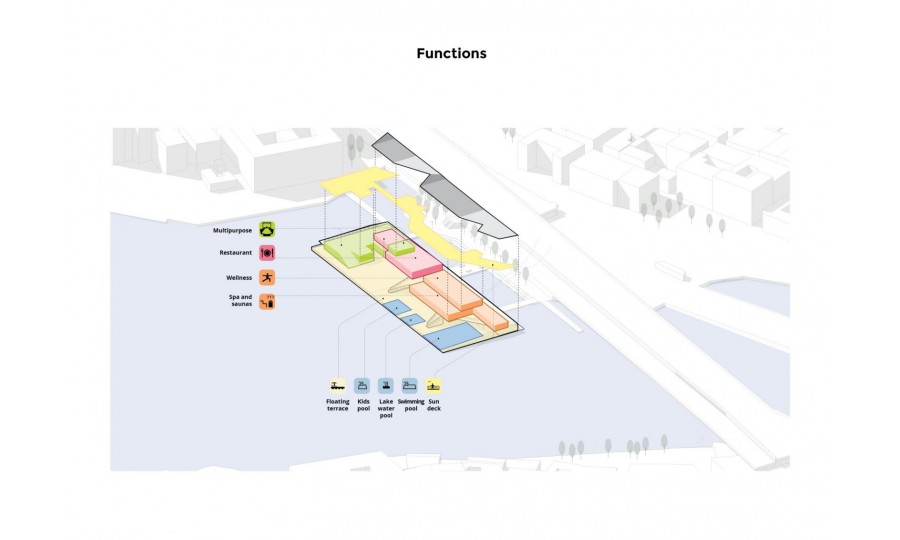
The Hamnbad Stockholm by OOPEAA
The first Allas Sea Pool was completed in Helsinki in May 2016. Taking the concept as its basis, Hamnbad Stockholm combines the experience of contemplation on nature and healthy physical activity with the social aspects of life in a city. With several all-year-round outdoor pools, saunas, as well as a combination of freely accessed public facilities and several flexible spaces that can be adapted for a range of activities, the Hamnbad Stockholm will provide a new platform of public space in the city and activate the relationship of the city with the sea in a new way.
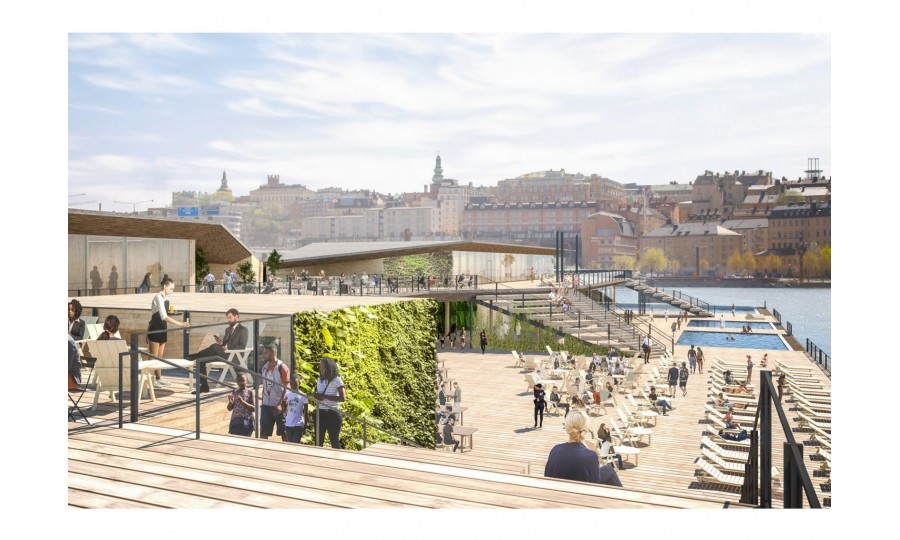
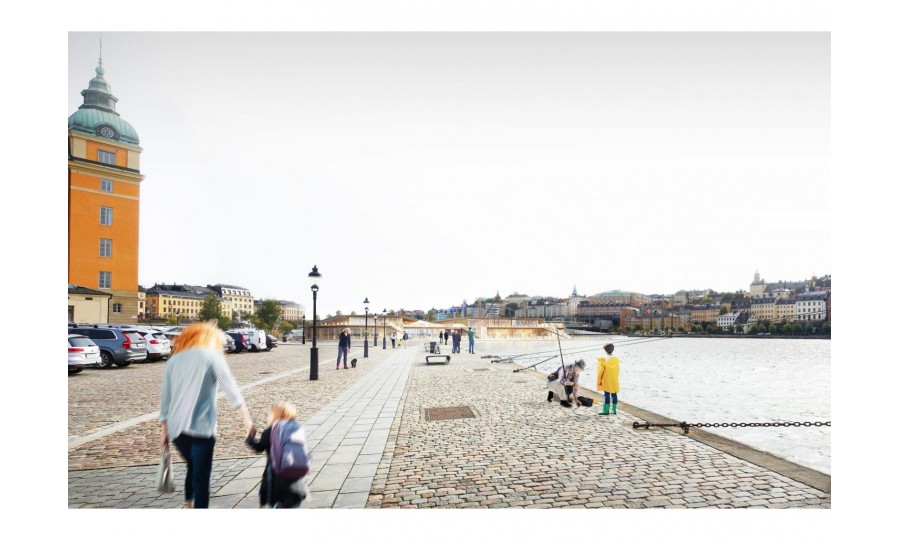
The Hamnbad Stockholm by OOPEAA
The floating pool is set to extend the urban public space in the heart of the city by introducing a new structure over the water and inviting people to experience the shoreline as an important element of the city. The program consists of two types of indoor areas, one containing the saunas and the spa, and the other featuring a restaurant, a cafeteria and multipurpose space for events, as well as two types of outdoor areas, one with pools and sundecks, and the other with terraces. While a ticket is required to enter the pools, the terraces and viewing decks are freely open to the public.
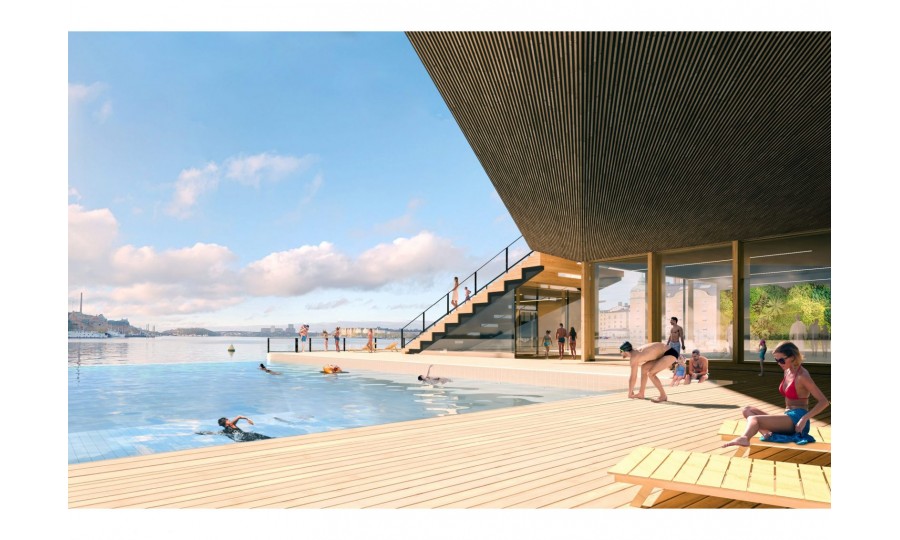
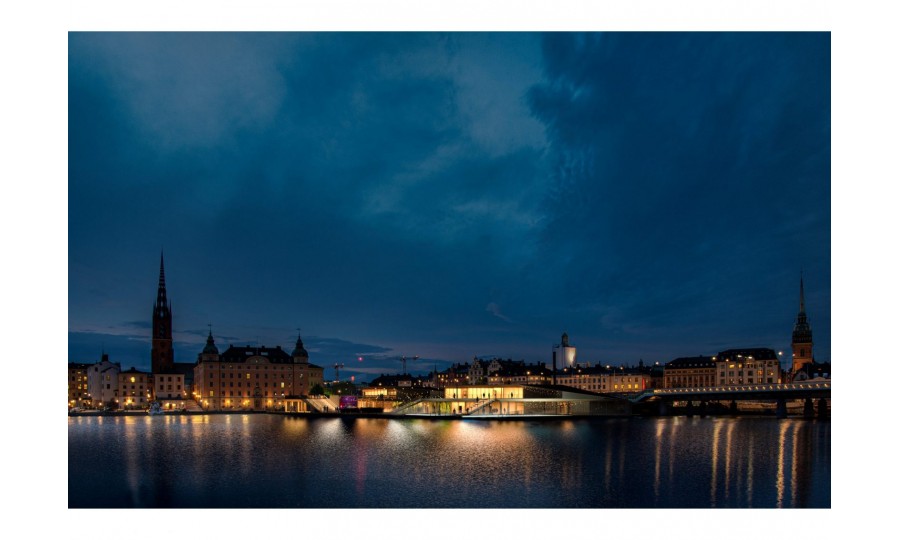
The Hamnbad Stockholm by OOPEAA
Designed to relate to the surrounding cityscape, the two-story floating structure will be carefully adjusted to line up with the height level of the bridges in order not to disturb the skyline of the city, while its materiality and colour palette will reference the buildings in the neighborhood. The temporary building will be prefabricated of CLT (cross-laminated timber) units that will be fully prepared to be plugged in onsite. The modular wooden structure has been intentionally designed to accommodate disassembly and transportation over waterways to a different site for re-assembly, after the 10-year building permit in Stockholm is over. The project is set to welcome its first visitors in 2023.
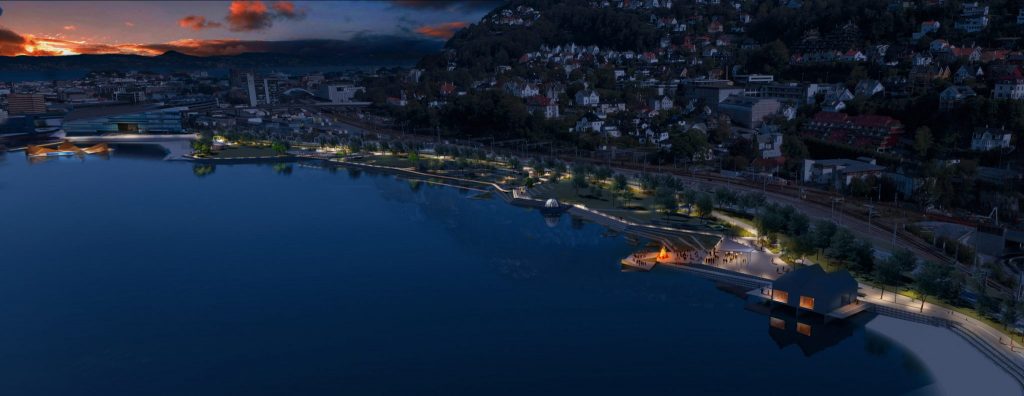

Floating pool in Bergen by White Arkitekter
Swedish studio White Arkitekter has designed a starfish-shaped floating pool in Bergen, Norway, which will be built as part of the redevelopment of the city’s coastline into a waterfront park called True Blue on the Store Lungegårdsvann lake, an inlet of the North Sea. With this project, the architects aim to express “the love story between the city of Bergen and water in all its forms, the mist, the rain, the running streams and the waiting sea.”
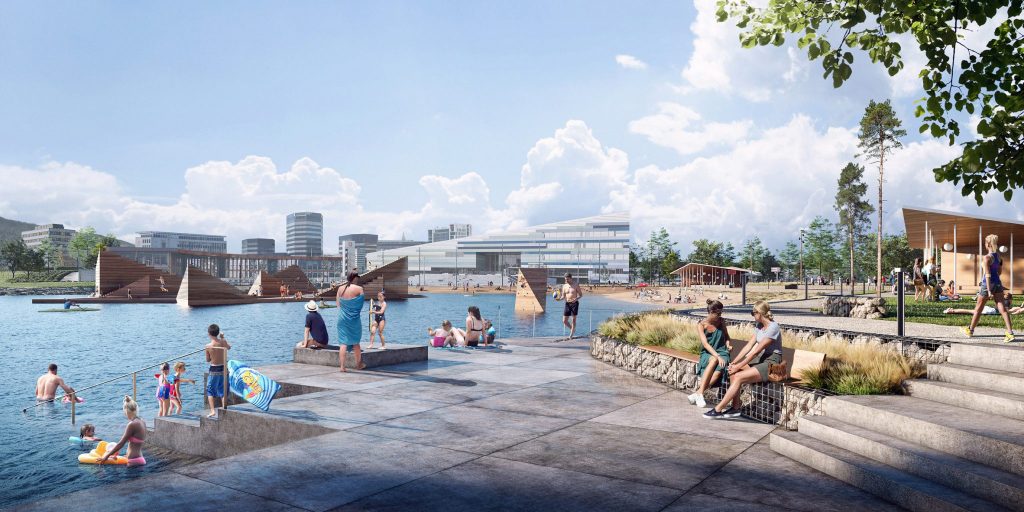
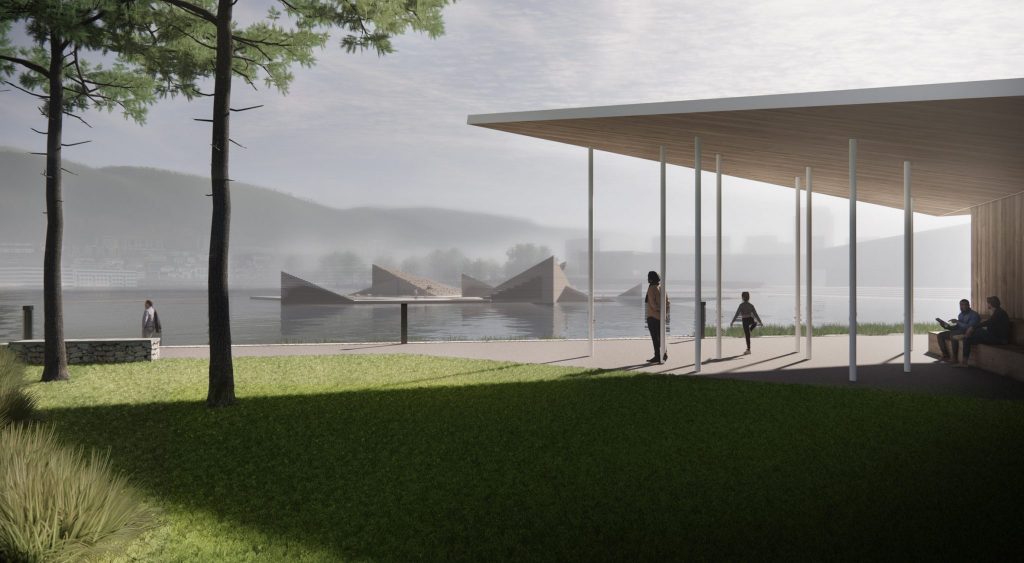
Floating pool in Bergen by White Arkitekter
Given the harsh conditions of the natural coast, the team is going to build a 1,500-metre sea wall, which will form the perimeter of the park and the backbone to a series of gardens and outdoor play areas. The space will be divided into three sections that will each be programmed differently. The first one, named Urban beach and located closest to the city, will feature a floating sea pool, which according to the architects, will serve as a multifunctional platform that can be used as a space for gatherings, events and parties for large audiences.
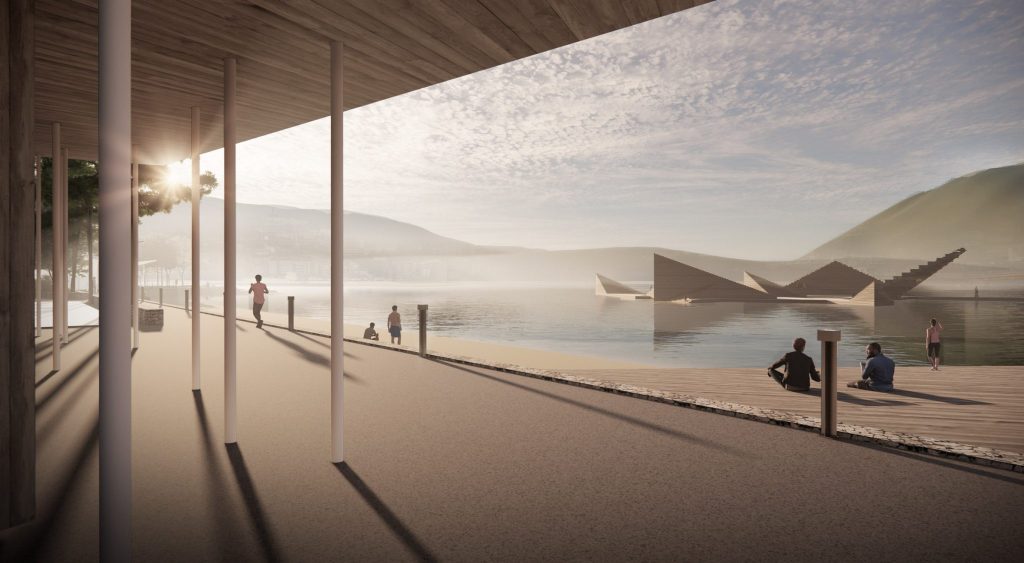
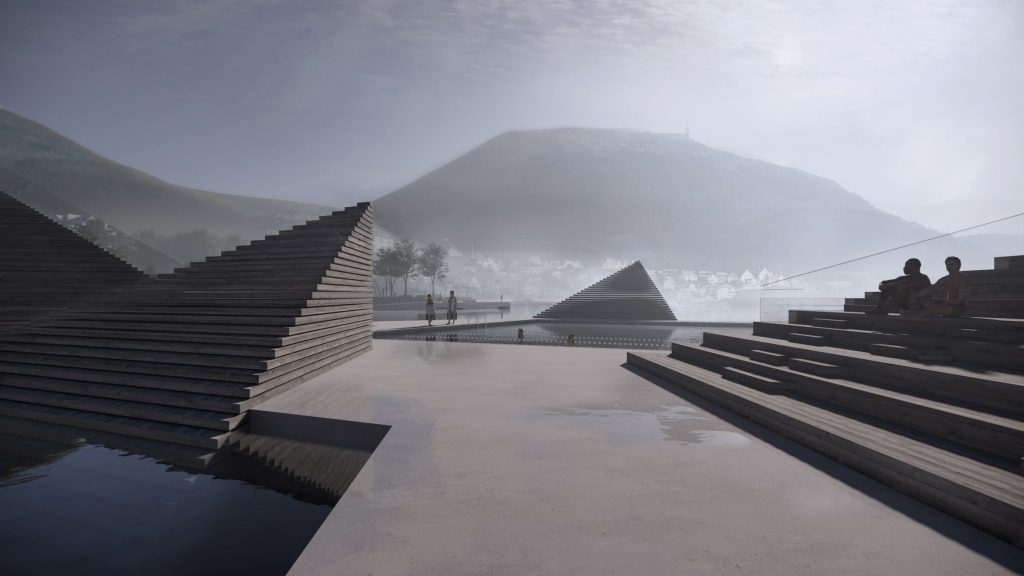

Floating pool in Bergen by White Arkitekter
The pool will be connected to the mainland by a pontoon and will consist of several triangular volumes, which will be arranged around three geometric pools and feature a sauna, picnic areas and kayak rental facilities. The triangular shape has been chosen as it is both elegant and functional. Low centre of gravity makes it a prime candidate for floating structures, while visually its precise geometry is a spectacular way to express architecture in a natural landscape.